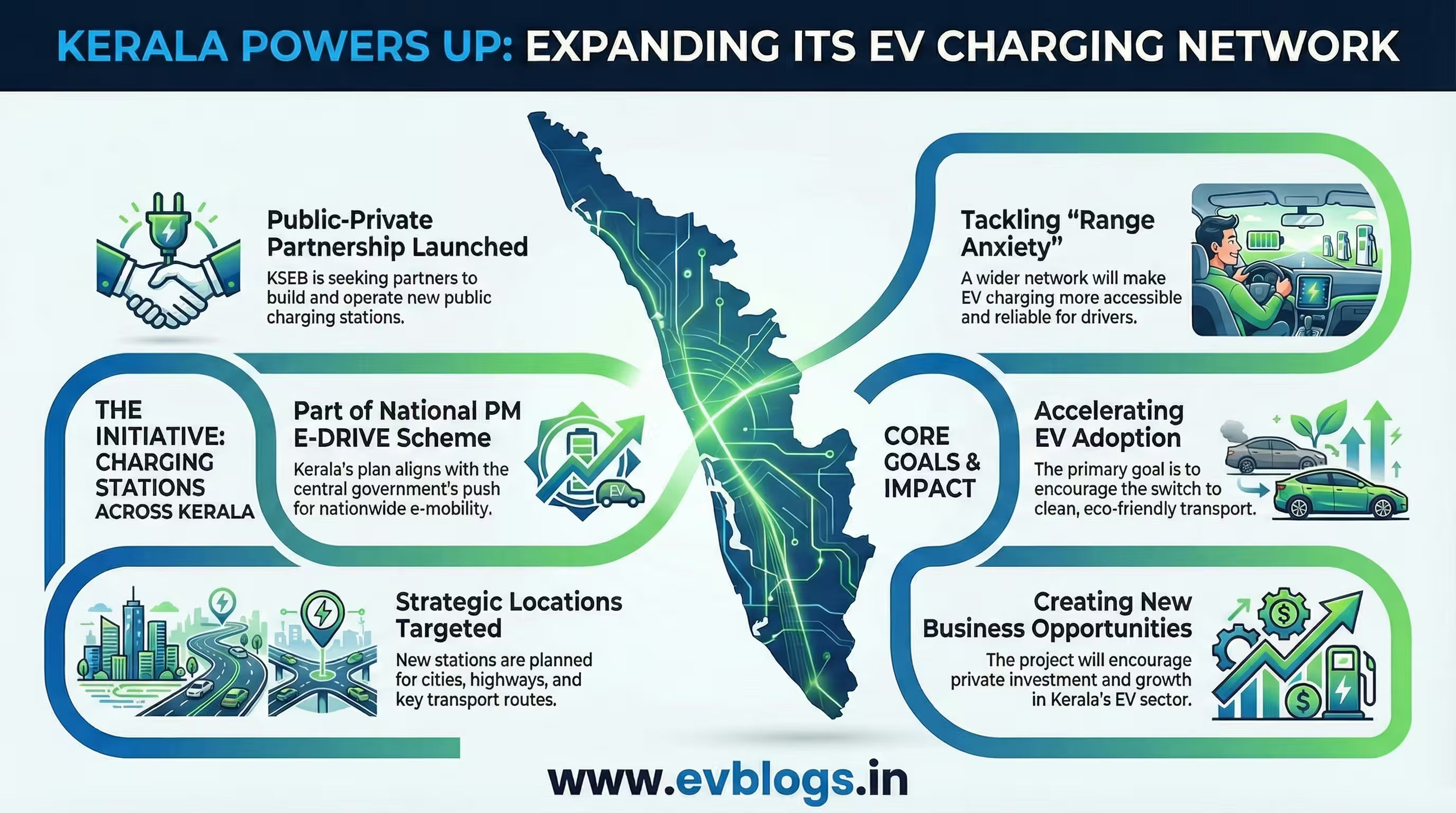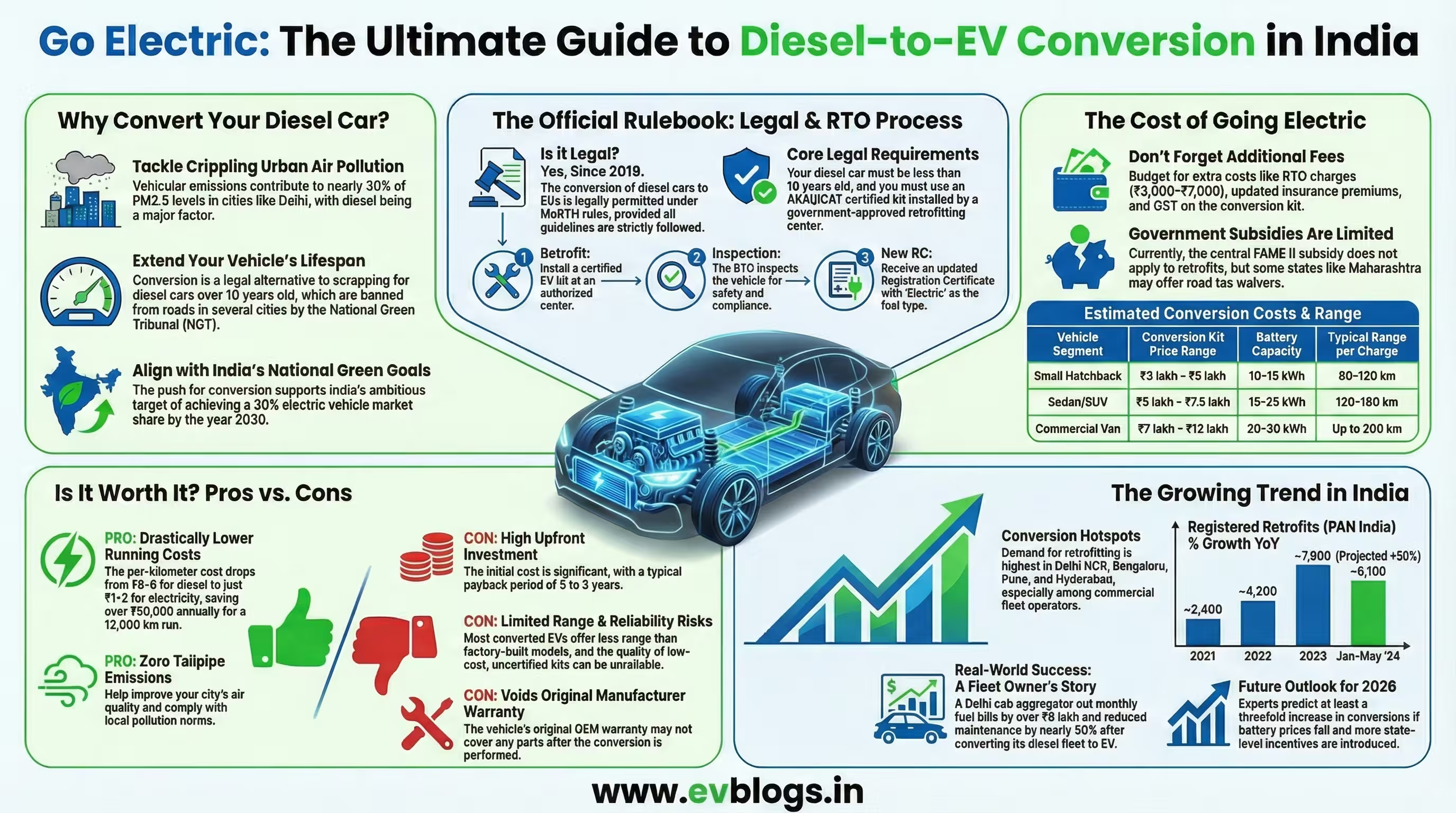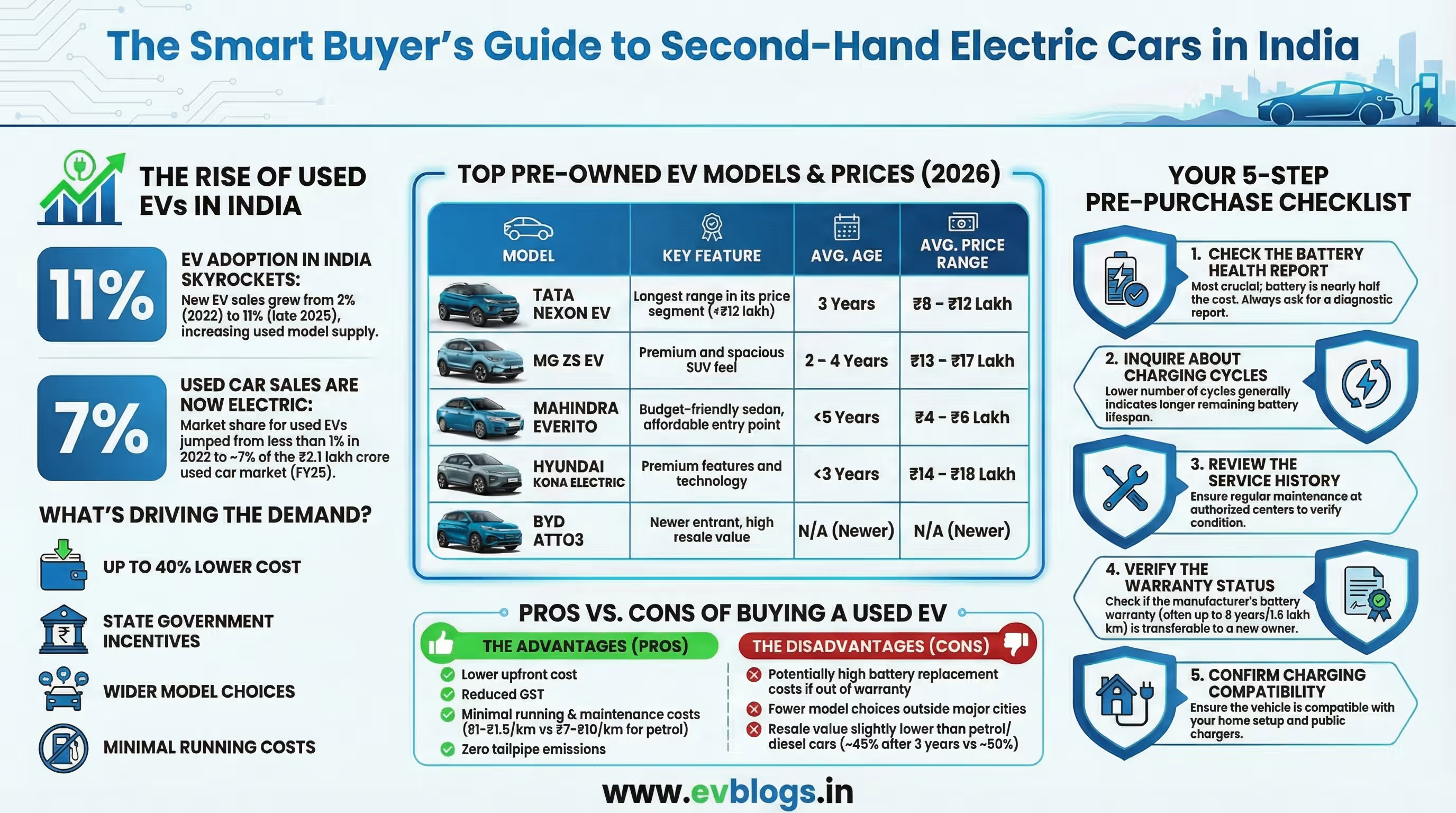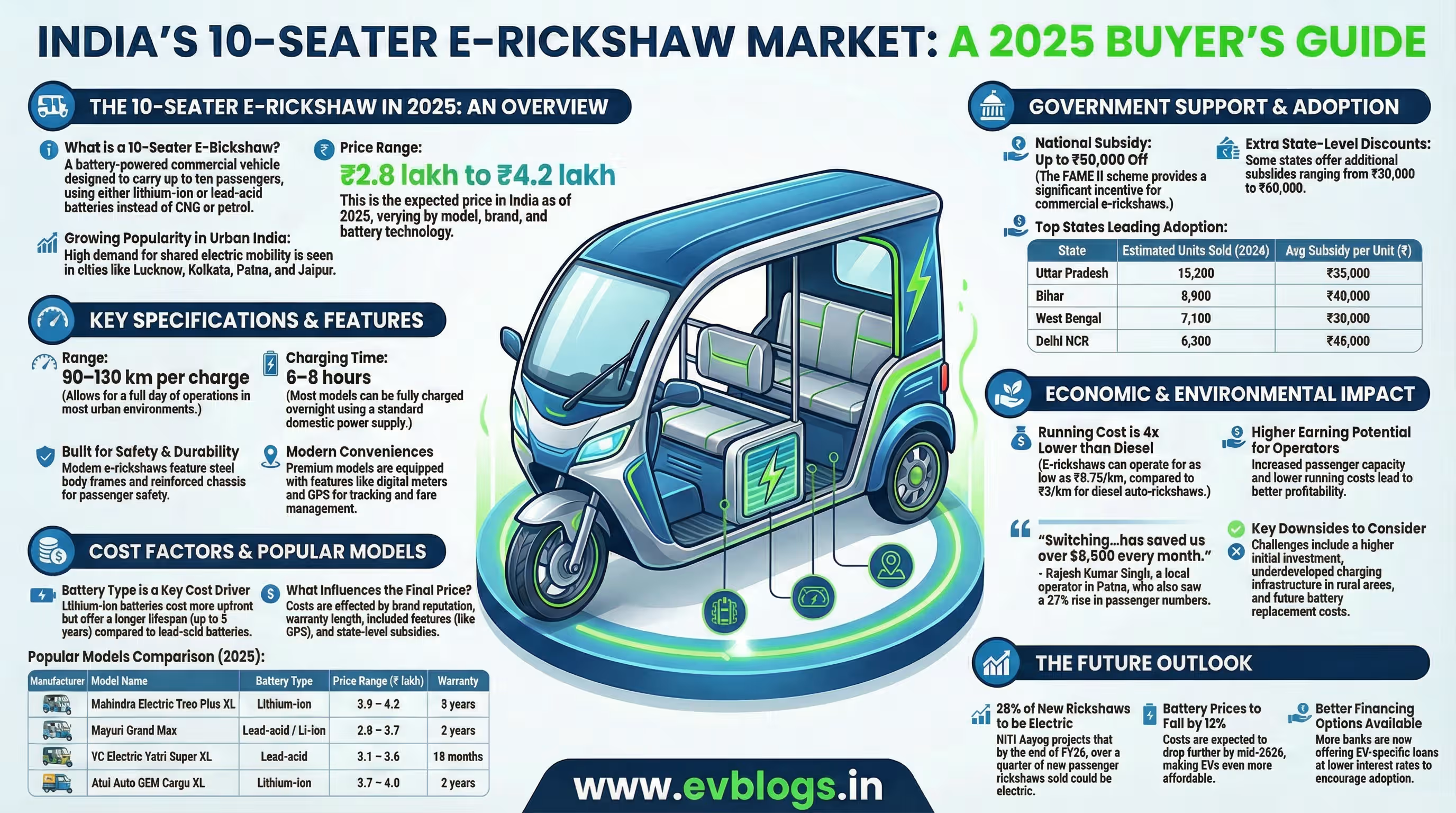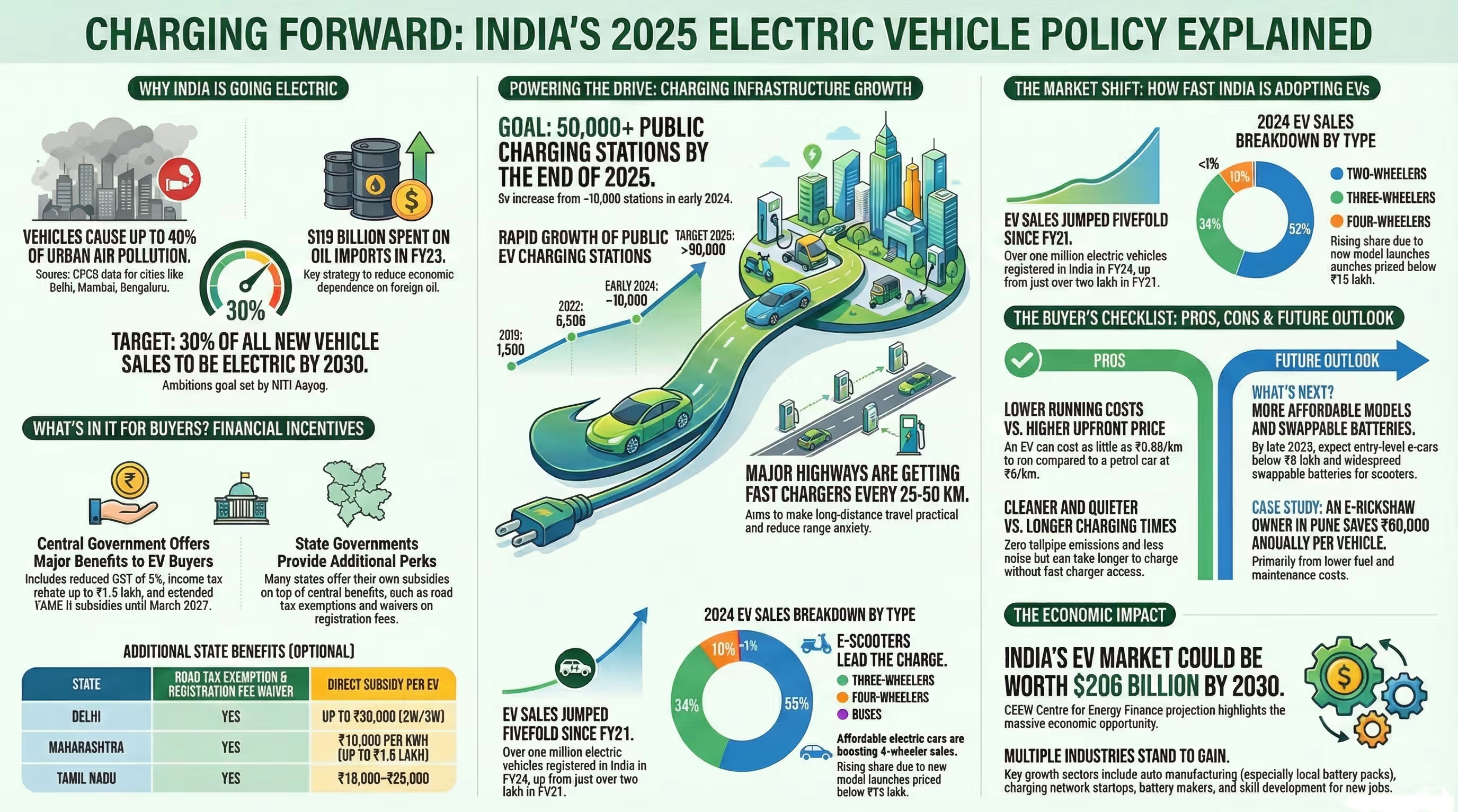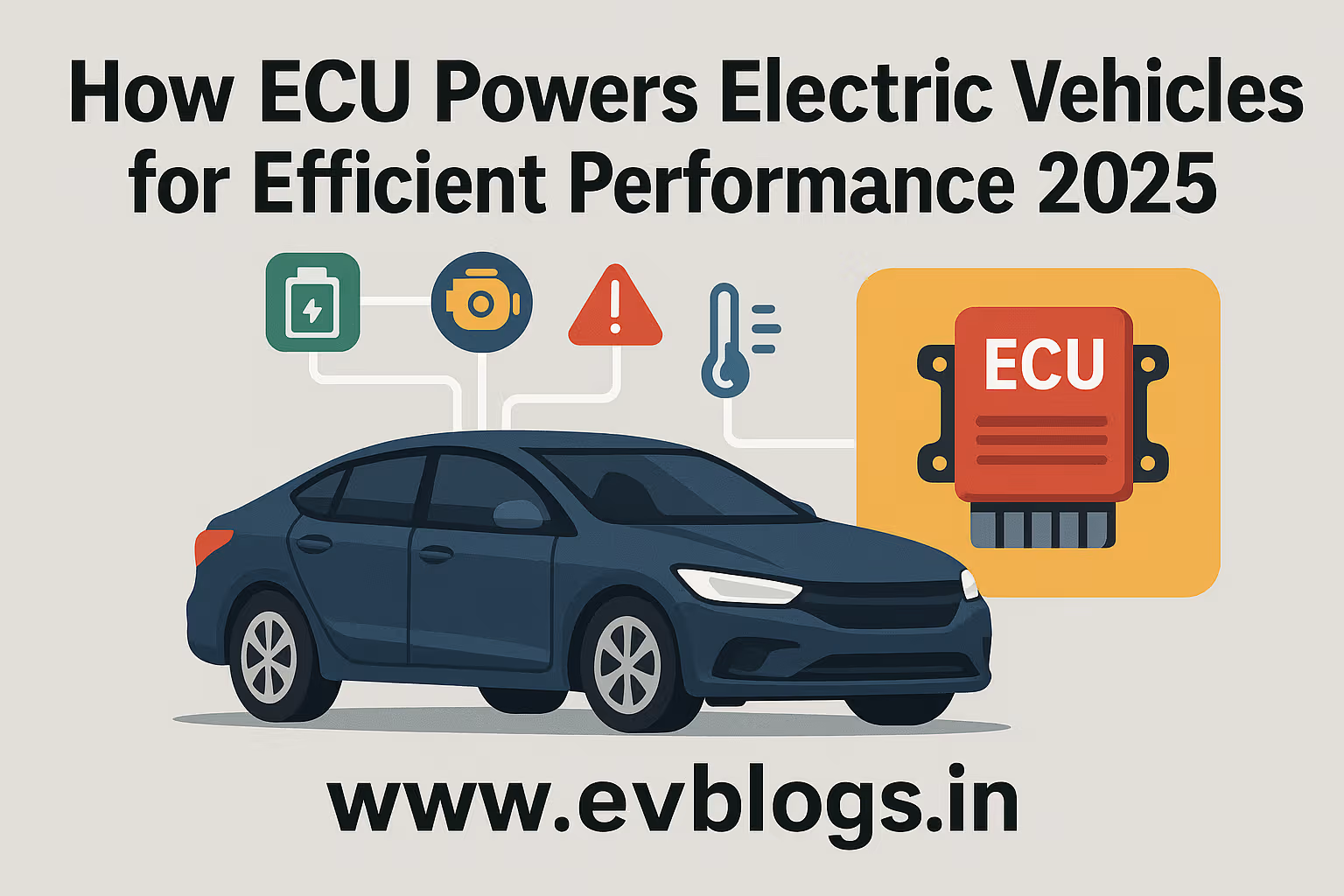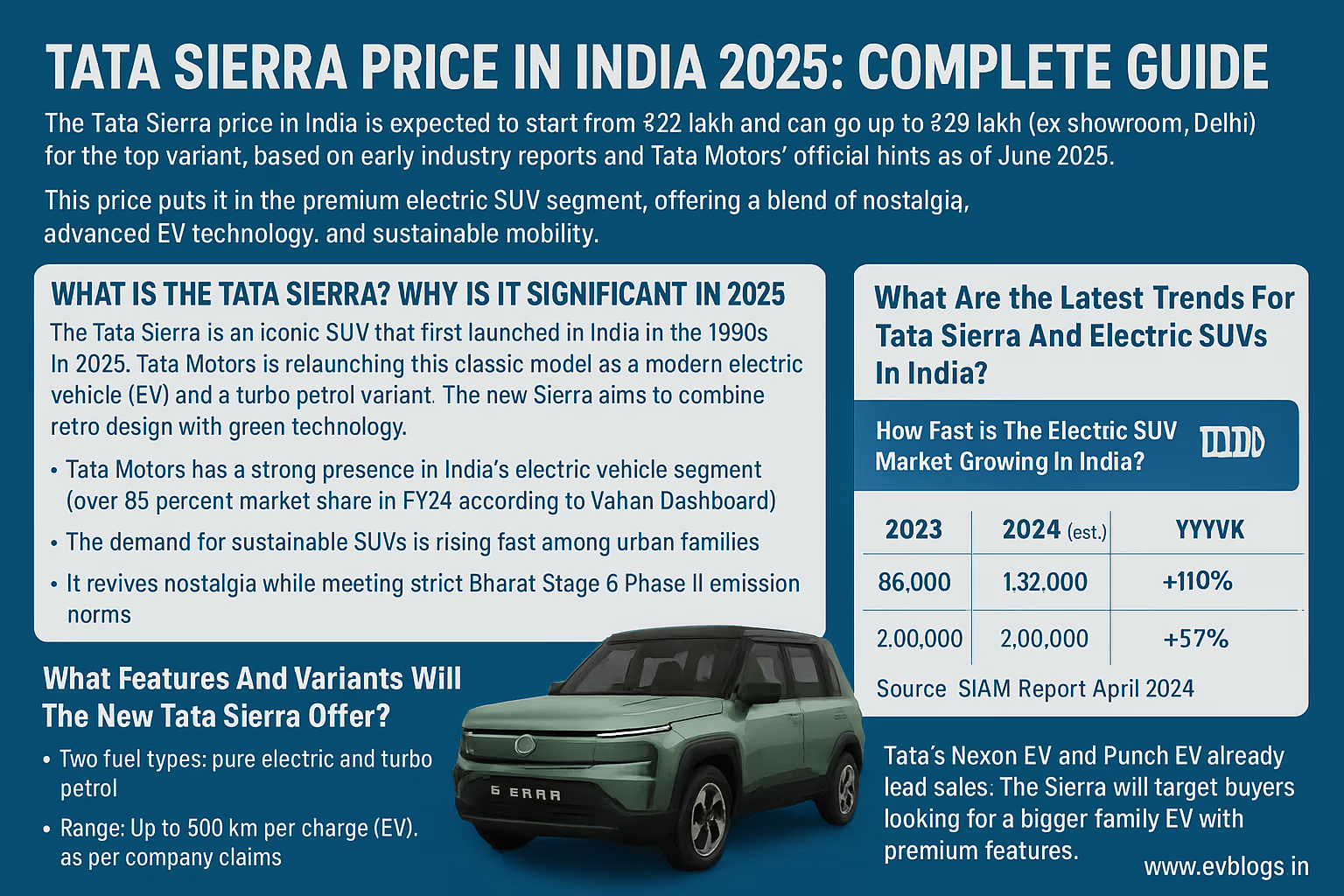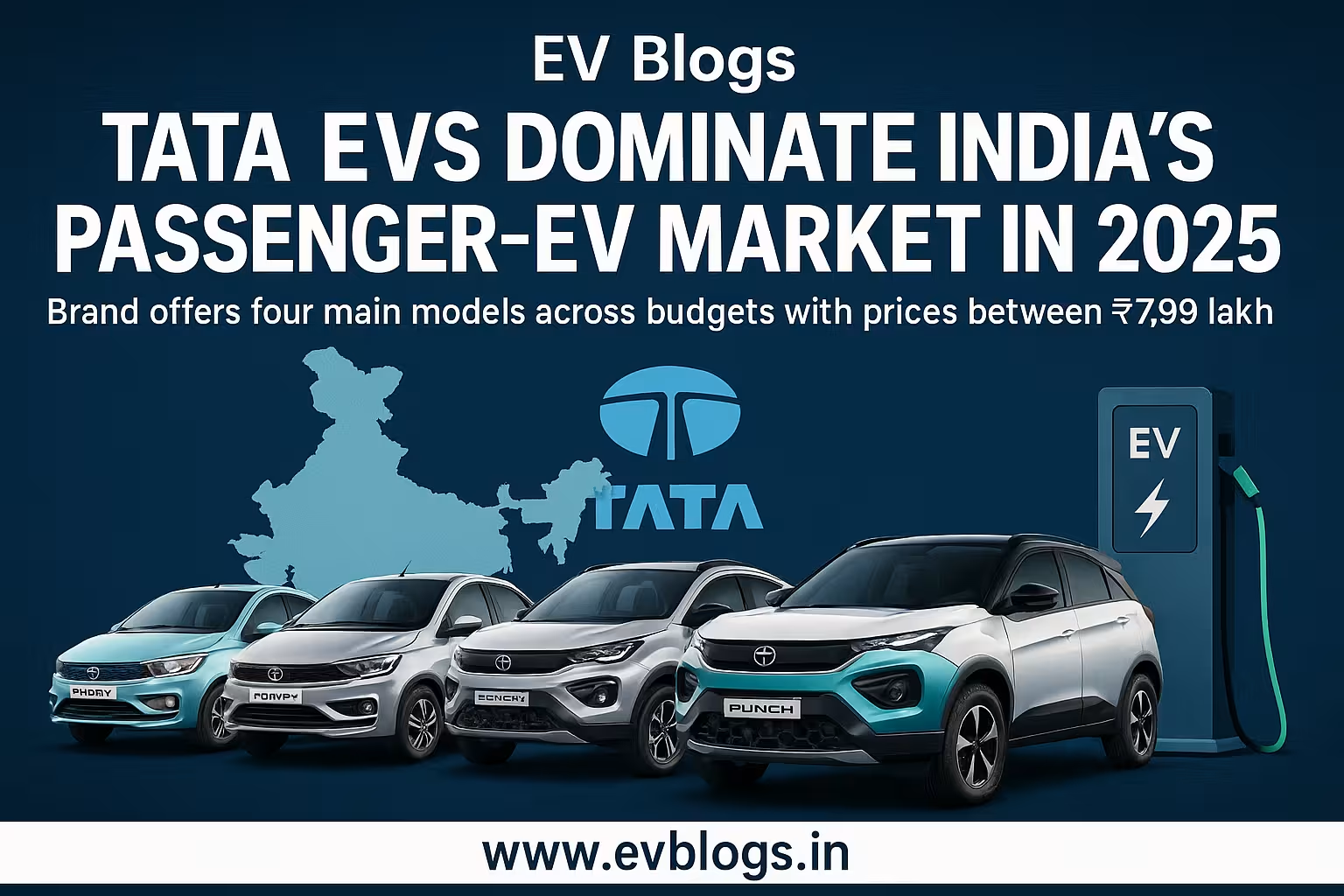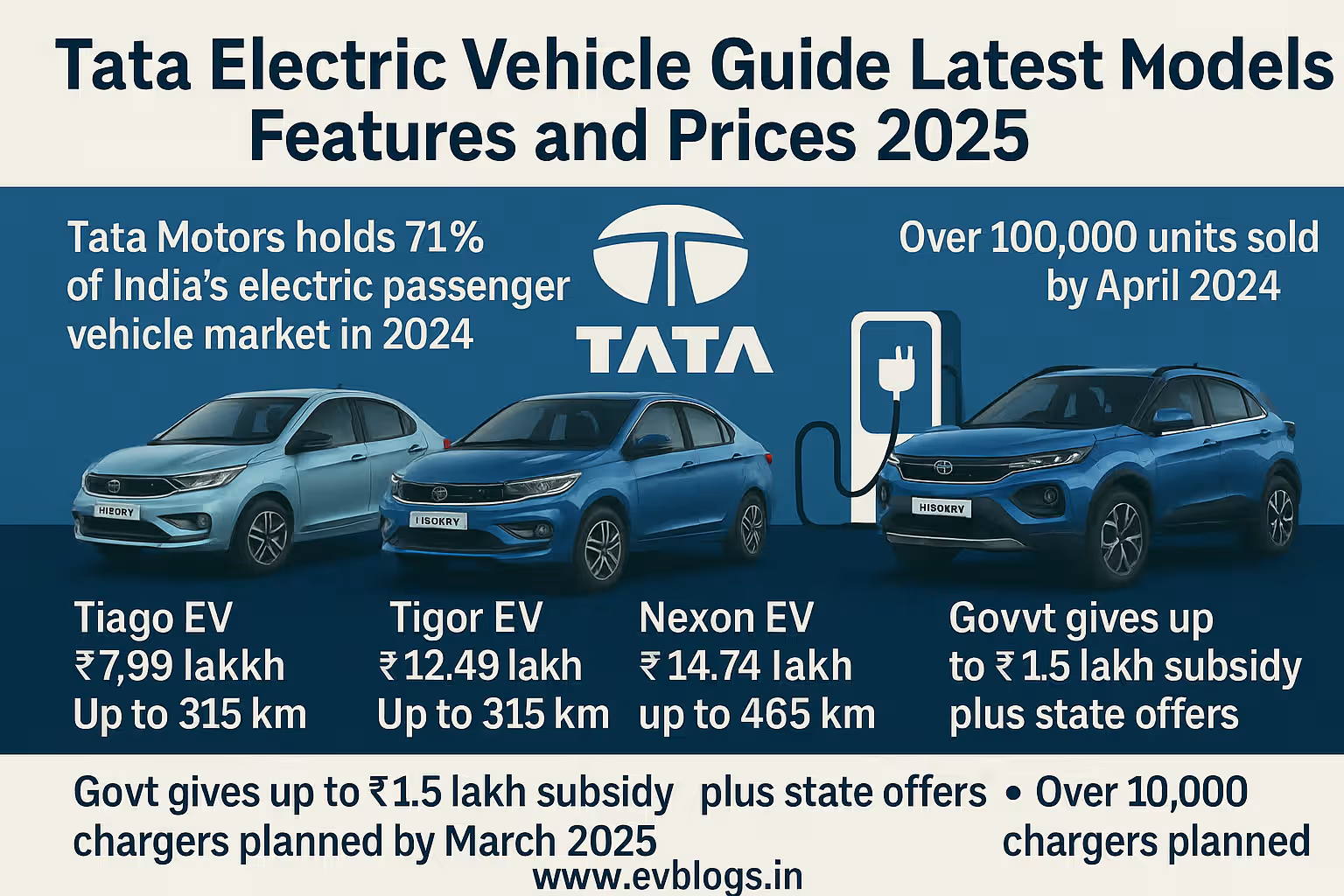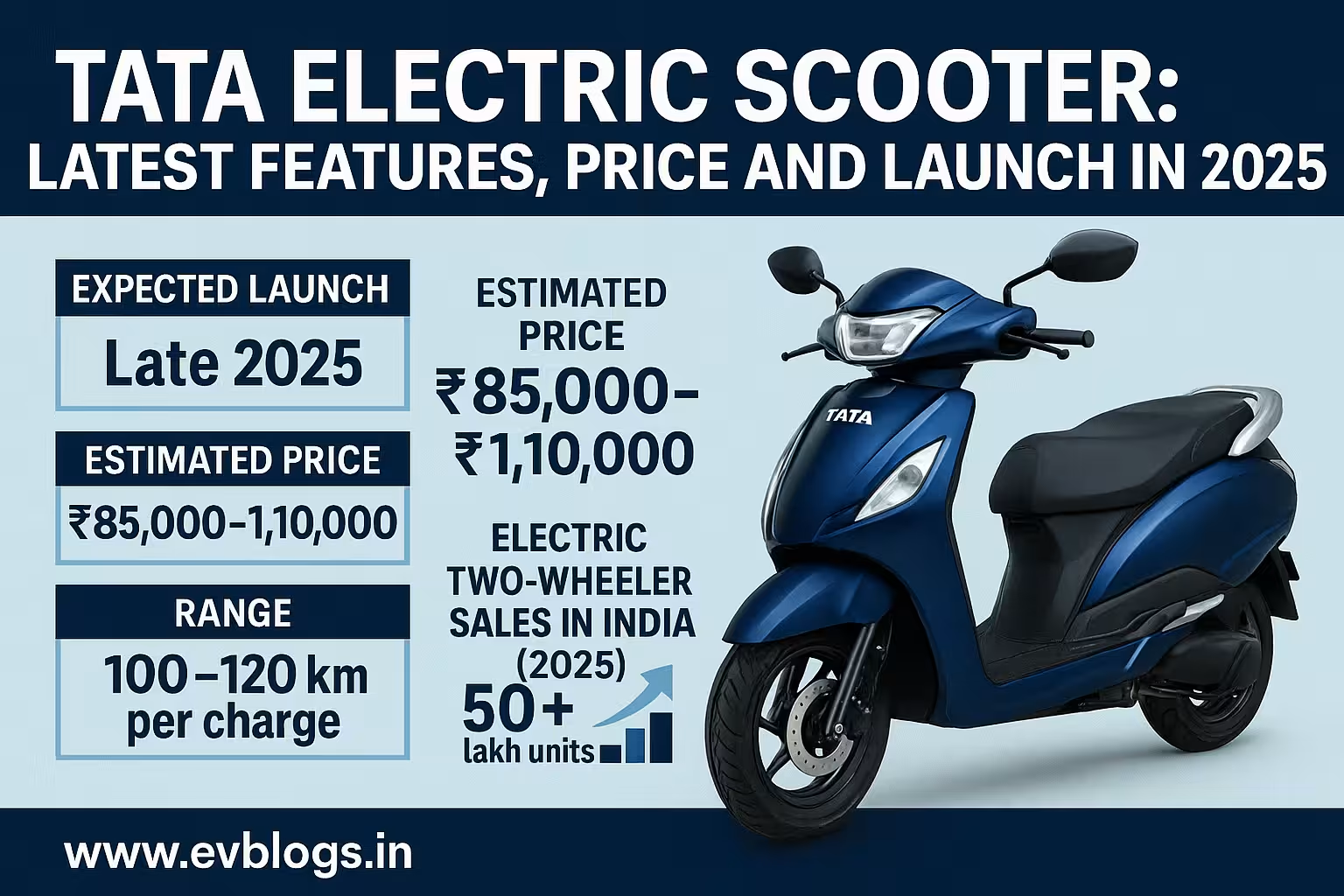Hedhvick Hirav
Hedhvick Hirav is a dedicated EV researcher and editor with over 4 years of experience in India’s growing electric vehicle ecosystem. Their contributions have been recognized in leading sustainability publications and automotive journals.
Summarize & analyze this article with
Choose an AI assistant and open this article directly:
Tip: if the AI doesn’t fetch the page automatically, paste the article URL manually.
What Is the Electric Vehicle Index in India and Why Does It Matter in 2025?
The Electric Vehicle Index is a unique metric that helps you compare and understand the progress of electric vehicles (EVs) in India. It takes into account several factors: EV adoption rates, infrastructure, government support, manufacturer activity, and even consumer sentiment. For Indian users in 2025, the Electric Vehicle Index serves as a practical tool to help you see where India stands globally and how your choices may be influenced.
EVs are no longer a distant concept in India. With cities like Bengaluru, Delhi, and Hyderabad seeing more EVs on the road, you may be wondering: is this the right time for you to buy one? The Electric Vehicle Index helps answer that question by measuring India’s readiness and growth in the EV sector.
Some key reasons why the Electric Vehicle Index matters to you now:
- It helps compare India’s EV progress with other countries and states.
- It reflects how easy and affordable it is to own an EV in India.
- It highlights policy support, manufacturer investment, and charging infrastructure.
- It influences your confidence in choosing an EV in 2025.
Did You Know?
India’s EV market is expected to grow at a CAGR of 45% from 2024 to 2030, reaching over 10 million units sold annually by 2030 (NITI Aayog, 2025).
Who Are the Top Players in India’s Electric Vehicle Market in 2025?
When you look for the best EVs in India, you will see many new faces and some familiar automobile giants. The Electric Vehicle Index reviews the most active and innovative brands so you can compare their offerings.
Leading Electric Vehicle Companies in India:
- Tata Motors (Nexon EV, Tiago EV, Punch EV)
- Mahindra Electric (XUV400, e-Verito)
- Ola Electric (S1 Pro, S1 Air)
- Ather Energy (450X, 450S)
- BYD India (E6, Atto 3)
- MG Motor (ZS EV, Comet EV)
- Hyundai (Kona Electric, Ioniq 5)
- Hero Electric (Optima, Photon)
- TVS Motor (iQube)
- Citroën (ëC3)
What Sets These Players Apart?
- Tata Motors leads with over 40% market share in 2025, providing value and strong after-sales networks.
- Ola Electric dominates the e-scooter segment with affordable pricing.
- BYD and MG bring global technology to the Indian market.
- Hyundai and Mahindra focus on premium EVs for urban consumers.
- Hero Electric and Ather Energy target cost-conscious city riders.
What Factors Are Included in the Electric Vehicle Index in India?
The Electric Vehicle Index is not just about how many EVs are sold. It’s a composite measure that considers all aspects critical for Indian users.
Key Components Considered in the Index:
- Market Penetration: Percentage of EVs in total auto sales (about 7% in 2025).
- Infrastructure: Number and spread of public charging stations (24,000+ in 2025).
- Government Policies: Central and state incentives, FAME II scheme, GST reductions.
- Manufacturer Activity: Local manufacturing, innovation, and product launches.
- Affordability: Average EV price vs. ICE vehicles.
- User Sentiment: Consumer adoption rates and satisfaction surveys.
- Environmental Impact: Reduction in CO2 and air pollution metrics.
- After-sales Support: Service network, warranties, and battery recycling options.
Expert Insight
In 2025, Delhi, Maharashtra, and Karnataka have the highest EV adoption index, thanks to local subsidies and aggressive infrastructure buildup.
How Does India’s Electric Vehicle Index Compare Globally in 2025?
You might wonder: is India winning the EV race or catching up? The global Electric Vehicle Index lets you see where India stands against countries like China, the US, and Europe.
| Country | EV Market Share (2025) | Public Chargers | Avg. Cost (INR Lakh) | Govt. Incentives | Top Brands |
|---|---|---|---|---|---|
| India | 7% | 24,000+ | 7-30 | FAME II, State Subsidy | Tata, Mahindra, Ola, BYD |
| China | 36% | 1,800,000+ | 6-35 | Extensive | BYD, NIO, Wuling |
| USA | 10% | 160,000+ | 25-50 | Federal Credits | Tesla, Ford, GM |
| Germany | 27% | 90,000+ | 30-60 | High | VW, BMW, Mercedes |
| UK | 25% | 65,000+ | 25-55 | Grants | Nissan, Jaguar, BMW |
| Japan | 12% | 50,000+ | 18-45 | Moderate | Toyota, Nissan, Honda |
| France | 24% | 60,000+ | 28-52 | High | Renault, Peugeot |
| South Korea | 14% | 40,000+ | 20-45 | Moderate | Hyundai, Kia |
| Norway | 85% | 25,000+ | 40-60 | Extensive | Tesla, VW, Nissan |
| Netherlands | 32% | 60,000+ | 29-55 | High | Tesla, VW, MG |
How Does This Influence Your Decision?
- India still lags behind China and Europe in EV penetration and infrastructure.
- However, India leads in price competitiveness, making EVs more accessible for the mass market.
- Policy support is improving fast, but further infrastructure investment is needed.
Which Electric Vehicles Offer the Best Value in India in 2025?
Choosing the right EV is not just about price. You want to know which vehicle gives you the best range, safety, and features for your budget. Here’s a comprehensive comparison of the top 10 EVs in India for 2025.
| Model | Price (INR Lakh) | Range (km) | Fast Charging | Top Speed (km/h) | Battery Warranty | Segment |
|---|---|---|---|---|---|---|
| Tata Tiago EV | 7.99 - 11.89 | 250-315 | Yes | 120 | 8 years/1.6 lakh | Hatchback |
| Tata Nexon EV | 14.49 - 19.49 | 312-453 | Yes | 140 | 8 years/1.6 lakh | SUV |
| MG Comet EV | 6.98 - 8.98 | 230 | Yes | 100 | 8 years/1.2 lakh | Microcar |
| Mahindra XUV400 | 15.99 - 19.39 | 375-456 | Yes | 150 | 8 years/1.5 lakh | SUV |
| BYD Atto 3 | 33.99 | 521 | Yes | 160 | 8 years/1.5 lakh | SUV |
| Hyundai Ioniq 5 | 45.99 | 631 | Yes | 185 | 8 years/1.6 lakh | Premium SUV |
| Ola S1 Pro | 1.30 | 195 | Yes | 120 | 3 years/40,000 | Scooter |
| Ather 450X | 1.40 | 150 | Yes | 90 | 3 years/30,000 | Scooter |
| TVS iQube | 1.08 | 140 | Yes | 82 | 3 years/30,000 | Scooter |
| Citroën ëC3 | 11.50 - 12.70 | 320 | Yes | 107 | 7 years/1.4 lakh | Hatchback |
What Should You Look For?
- Tata Tiago EV and MG Comet EV are best for budget city driving.
- Tata Nexon EV, Mahindra XUV400, and BYD Atto 3 suit families with longer commutes.
- Ola S1 Pro, Ather 450X, and TVS iQube are top picks for two-wheeler users.
Did You Know?
Over 50% of Tata Nexon EV buyers in 2024-25 are first-time car owners, showing a shift in mindset towards affordable clean mobility.
Why Is the Electric Vehicle Index Important for Indian Buyers in 2025?
You might be asking: why bother with this index? The Electric Vehicle Index is not just for researchers or policymakers—it is designed for you, the Indian car or bike buyer.
How the Index Helps You:
- Compare Models Easily: Assess EVs side by side, considering range, price, and features.
- Assess Infrastructure: Check if your city has enough charging stations for daily needs.
- Understand Incentives: Get clarity on how much you can save with central and state subsidies.
- Predict Resale Value: Higher index means better resale, as the market matures.
- Trust in After-sales Support: Top index scores indicate reliable service and warranty coverage.
How Indian Users Benefit:
- Save money on running costs (up to 65% lower than petrol/diesel).
- Enjoy smooth, quiet, and eco-friendly driving.
- Access government perks like free parking, green registration, and road tax exemption.
Expert Insight
According to a 2025 user survey by Autocar India, 78% of EV owners are “satisfied” or “very satisfied” with their vehicles, mainly due to low maintenance and fuel savings.
When Should You Shift to an Electric Vehicle in India?
Timing your switch to electric is crucial. Many Indian users ask: “Is 2025 the right year to buy an EV?” Here’s what you need to consider.
Factors to Evaluate:
- Model Availability: 2025 brings more affordable and diverse options, both cars and scooters.
- Charging Infrastructure: Most tier-1 and tier-2 cities now have rapid chargers within 5-10 km distance.
- Government Incentives: FAME II extended till 2025, with possible new schemes coming.
- Resale Value: EVs from reputed brands have better resale prospects as demand increases.
- Battery Technology: Latest Li-ion and LFP batteries offer higher range and longer life.
Who Should Shift Now?
- If you have daily commutes under 100 km, an EV now makes sense.
- Urban users with easy charging access gain the most.
- Early adopters benefit from extra incentives and green perks.
Did You Know?
In 2025, over 30% of new vehicle registrations in Delhi are pure electric, thanks to strong policy push and local charging infrastructure.
Which Cities Lead in the Electric Vehicle Index in India in 2025?
All cities in India are not equal when it comes to EV adoption. Some are way ahead in making EVs easier for you.
| City | EV Adoption Rate | Public Chargers | State Incentives | Top Brands Sold |
|---|---|---|---|---|
| Delhi | 30% | 2,500+ | Road tax, free reg. | Tata, MG, Ather |
| Bengaluru | 18% | 2,200+ | Subsidies, parking | Ola, Ather, Tata |
| Mumbai | 14% | 1,900+ | Toll exemption | Tata, Mahindra, MG |
| Hyderabad | 13% | 1,600+ | Battery swap, rebate | Tata, Ola, Ather |
| Pune | 11% | 1,400+ | Subsidy, green zones | Tata, BYD, Ather |
| Chennai | 10% | 1,200+ | Low interest loans | TVS, Tata, MG |
| Ahmedabad | 9% | 1,100+ | Stamp duty rebate | Tata, MG, Hero |
| Kolkata | 7% | 980+ | Parking benefits | Tata, Mahindra |
| Jaipur | 6% | 820+ | Registration waiver | Tata, Ola |
| Kochi | 5% | 670+ | Charging subsidy | Tata, Ather, MG |
What Makes These Cities Stand Out?
- Robust charging networks and quick government approvals.
- Attractive local incentives, sometimes covering up to 20% of sticker price.
- Strong after-sales support from leading brands.
Did You Know?
Bengaluru has the highest number of electric two-wheeler owners in India, due to tech-savvy population and better charging infrastructure.
How Does the Electric Vehicle Index Affect Charging Infrastructure in India?
A big challenge for Indian users is “range anxiety”—the worry of running out of charge mid-journey. The Electric Vehicle Index tracks how charging infrastructure is developing, so you can plan confidently.
Current Charging Scenario (2025):
- Over 24,000 public charging stations nationwide.
- National Highways Authority of India (NHAI) to install chargers every 30 km on expressways.
- Fast DC charging is now available at most urban centers.
- Battery swapping stations for two- and three-wheelers in key metro cities.
What to Look for as a User:
- Is there a charger within 5 km of your home or work?
- Does your EV brand offer a home charging solution?
- Are fast chargers available for outstation travel?
- Does your city have a mobile app to locate charging points?
Expert Insight
In 2025, smart apps like Tata Power EZ Charge and Ather Grid make it easy for you to find, reserve, and pay for charging in real-time.
How Do Government Policies Influence the Electric Vehicle Index in India?
Your EV decision is shaped by subsidies, tax breaks, and rules from both central and state governments. In 2025, new schemes and updates make EVs more affordable and practical.
Key Policies Influencing the Index:
- FAME II Scheme (Faster Adoption and Manufacturing of Electric Vehicles):
- Extended till March 2025.
- Up to ₹10,000 per kWh battery incentive for two- and three-wheelers.
- Up to ₹15,000 per kWh for electric cars (limited to ₹150,000 per vehicle).
- Reduced GST: Only 5% GST on EVs, compared to 28% for petrol vehicles.
- State-level Incentives:
- Delhi: Zero registration fee, road tax exemption, free charging.
- Maharashtra: Direct subsidies up to ₹2.5 lakh, scrappage bonus.
- Karnataka, Tamil Nadu: Investment in EV parks and R&D.
- Import Duty Reductions: For components and batteries till 2025 to encourage local assembly.
- Green Zones: Special EV-only areas in cities like Delhi, Pune, and Bengaluru.
What This Means for You:
- Lower upfront cost when you buy an EV.
- Possible free or discounted charging for early adopters.
- Faster registration and less paperwork.
Did You Know?
As of 2025, over 70% of EVs sold in India are manufactured locally, supporting “Make in India” and job creation.
How to Use the Electric Vehicle Index to Make an Informed Purchase in India?
With so much information, you may feel overwhelmed. The Electric Vehicle Index is designed to simplify your research and help you make a confident, informed decision.
Steps to Take:
- Check the Index for Your City: See how ready your local area is for EVs.
- Compare Models: Use range, price, warranty, and charging options to shortlist.
- Calculate Savings: Factor in incentives, lower running costs, and possible resale value.
- Assess Your Usage: If you commute under 100 km daily, most EVs are practical now.
- Test Drive and Ask for User Stories: Many dealerships now offer demo vehicles and connect you with current owners.
Real User Experience
- Ramesh from Bengaluru switched from a petrol hatchback to a Tata Nexon EV in 2024. His monthly running cost dropped from ₹6,500 to under ₹2,000, with near-zero maintenance.
- Priya in Mumbai uses an Ather 450X for her daily 30 km commute. She reports smooth rides, quick charging, and enjoys green zone access with no toll.
Expert Insight
Major auto portals now offer “EV ready score” for cities, helping you evaluate the best time and place to buy.
What Are Some Common Challenges and Solutions Highlighted by the Electric Vehicle Index in India?
While the Index shows progress, you should be aware of challenges that may affect your EV ownership experience.
Key Challenges:
- Charging Access in Tier-3 Cities: Still limited, but expanding fast.
- Battery Replacement Cost: High, though most brands offer 7-8 year warranties.
- Limited Model Choice in Commercial Segment: Few options for electric trucks and vans.
- Price Sensitivity: Some users find initial cost higher compared to petrol/diesel.
Solutions Emerging in 2025:
- Aggressive expansion of fast and battery swap charging in smaller cities.
- Battery leasing and subscription plans to lower upfront cost.
- More used EVs entering the market, making it affordable for new buyers.
- Improved battery recycling policies to reduce long-term waste.
Did You Know?
Ola Electric and Sun Mobility launched battery swap stations in 10 new cities in 2025, reducing charging time to under 5 minutes for e-scooters.
Final Verdict: Should You Trust the Electric Vehicle Index Before Buying an EV in India?
The Electric Vehicle Index is your best friend in navigating the EV market in India in 2025. It gives you a clear, data-driven picture of which brands, models, and cities are truly EV-friendly. If you want to save money, enjoy smoother drives, and do your bit for the environment, checking the Index should be your first step.
Here’s Why:
- Combines government policy, user experience, infrastructure, and affordability.
- Reflects real-world conditions, not just company claims.
- Helps you spot the best value and avoid common pitfalls.
- Regularly updated with latest data and user feedback.
If you’re in a metro or tier-2 city, have daily drives under 100 km, and want low running costs, 2025 is the ideal time to switch to electric. Use the Electric Vehicle Index to compare, research, and test drive before making your final decision.
Disclaimer:
All facts and figures are as per industry data and government releases available until May 2025. Always consult official dealership and government sources for the latest offers and eligibility.
FAQs About the Electric Vehicle Index in India
Q1: What is the Electric Vehicle Index and how does it benefit Indian users?
A: It’s a comprehensive scorecard that tracks India’s progress in EV adoption, infrastructure, policies, and user sentiment, helping you make a better purchase decision.
Q2: Which city is best for buying an EV in India in 2025?
A: Delhi, Bengaluru, and Mumbai lead due to strong infrastructure and high local incentives.
Q3: Are electric vehicles cheaper to run than petrol/diesel in India?
A: Yes, EVs save you up to 65% on running costs, thanks to lower electricity prices and minimal maintenance.
Q4: What government schemes support EV buyers in India in 2025?
A: FAME II, state subsidies, lower GST, and incentives like free registration and road tax exemption.
Q5: How can I check if my city is EV-friendly?
A: Refer to city-level Electric Vehicle Index reports on leading auto websites, or consult local government portals for charging and incentive details.


